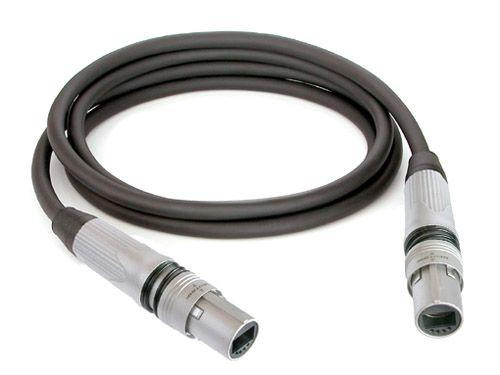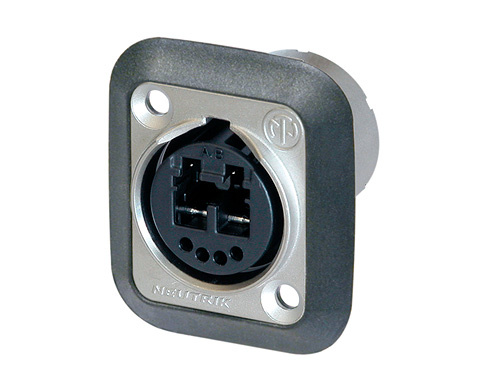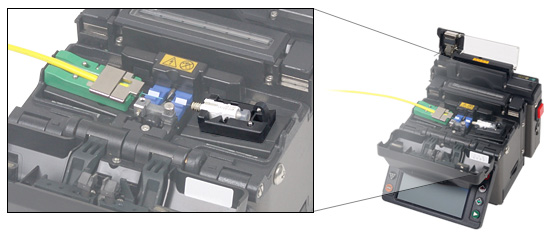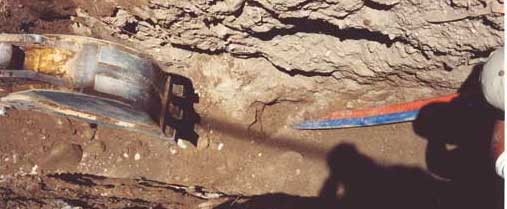

What's Up At Google? FCC Seeks Input on National Broadband Plan Australia to Build $31B Broadband Network Quotable: Carlini and Bowden Updated AFOT, CFOS Certifications FOA Online Fiber Optic Reference Guide Keeps Expanding- and adds Premises Cabling, FTTH and "Google Custom Search" Tech Topics: New Listings of International Standards. See Tech Topics Below. Q&A: Old Cable and OTDRs. Product News: Sealed hybrid connectors for audio/video. New PPS connector. Sales and used equipment buy/sell. See "Product News" Below Worth Reading: Free Web Conference On Premises Cabling Standards, April 27, JDSU Webinars, More. See "Worth Reading" below
|
Looking For a FOA-Certified Fiber Optic Installer? Use the FOA Installer Database Free! Almost 1000 CFOT's listed. CFOT's register online to create your listing. Want to know more about fiber optics? Study for FOA certifications? The FOA Online Fiber Optic Reference Guide. Contact the FOA |
| You can now renew your FOA certification online - and get an extra month free. Details here. |
| It's now CFOT® The FOA CFOT® (Certified Fiber Optic Technician) is now a registered trademark. With over 25,000 fiber optic techs holding CFOTs and the CFOT being recognized worldwide as the foremost certification in fiber optics, the FOA realized the value of the CFOT required trademark protection. Now it's official! Welcome To Our New International Schools! This month, the FOA has added a seven new international schools, including Greece, Turkey, Senegal, New Zealand, Egypt, the UK and Poland. Now FOA-Approved training and certification will be available to more fiber optic techs around the world. Check out our list of approved schools for your nearest training facility. Don't Miss This Web Conference! The TIA Fiber Optic Lan Section (FOLS) is holding a free web conference on "LAN Standards, News & Trends" on Monday, April 27th from 11:00 a.m. to 12:00 p.m. EST. More info. What's Up At Google? Remember Google's April Fool Joke in 2007, " Google TiSP?" (FOA Newsletter, April 07) They mailed you a router and a fiber optic cable which you flushed down your toilet. They collected the cable and hooked you up to the Internet. Well, that was a joke, but Google buying up capacity on dark fiber appears to be quite real. Of course, they own half the Internet servers in the US and are big internal users of fiber for server/SAN connections, but it appears that they now believe that owning their own fiber capacity is more economical than paying for others to transport their data. Enough so that the following job description was placed on their website: "Google is looking for Strategic Negotiator candidates with experience in...(i)dentification, selection, and negotiation of dark fiber contracts both in metropolitan areas and over long distances as part of development of a global backbone network." CNET: Google Wants Dark Fiber Add to this their work in operating systems for cell phones and now netbooks and offering phone service (Google Voice) makes you wonder if Google is aiming to be the "telcom company of the 21st century, while traditional telcos are abandoning land lines for wireless (just like many of their customers) and CATV companies are worried about video downloads. If they are creating a new network, I hope they read the recent article in the NY Times "Do We Need A New Internet" because the current one is in real need of some work. (We say that because we have received over 1,000 undeliverable email notices in the last two weeks from spammers using one of our emails as a false return address. That's very frustrating!) FCC Seeks Input on National Broadband Plan The USA, ranked somewhere near 20th in the world in broadband connections, is finally going to develop a national broadband plan. As you know from previous FOA Newsletters (1/09, 2/09), the stimulus plan includes $7.2B for development of broadband in underserved and rural areas. Also included is a requirement that the FCC develop a national broadband planby February of 2010. According to FCC Chairman Michael Copps, "This commission has never, I believe, received a more serious charge than the one to spearhead development of a national broadband plan." The notice of inquiry will ask for input on numerous issues, including: effective and efficient mechanisms for ensuring broadband, how to define and measure portability, affordable pricing and quality of services, the broadband program's impact on universal service programs, adoption and digital literacy rates, and how to advance policy goals such as public safety and the improvement of health care services through broadband. "Our notice of inquiry seeks to be open, inclusive, out-reaching and data-hungry," Copps said. "It will go outside Washington, D.C., to rural communities, the inner city and tribal lands. It will go where the facts and the best analysis we can find take it." FCC News Release and statement of Acting Chairman Michael J. Copps. and if you want to see what a government can do for broadband policy... Australia to Build $31 Billion Broadband Network Australia's government will build a new $30.7 billion national high-speed fibre-optic broadband network, rejecting bids in a controversial tender involving some of the country's largest telcos. http://www.cnbc.com/id/30076933/ and http://www.news.com.au/technology/story/0,28348,25301686-5014239,00.html Quotable: Shovel Ready vs. Fiber Ready James Carlini, CarlinisComments.com If we are to look at road construction, let's look at adding fiber optics into every road-building project. Let's look at adding a law that requires every highway construction project to also undertake the expansion of a state-of-the-art network. The incremental cost of adding fiber to the roadbed while it's being built is negligible compared to going back, ripping up the street and adding it later. This seems to be the common-sense approach. Unfortunately, we have too many people who fail to comprehend this in many decision-making roles who work in highway departments across most states. Editor's note: even if you don't install fiber, install conduits or innerduct for pulling fiber in later without having to dig up the roads! High Points In A Down Market Craig Bowden, FiberNexxt (FOA School # 193) Premise cabling : the sector hardest hit by the economic down-turn. End users have seen shrinking budgets for network expansion and maintenance which has fewer projects being released for construction. Winners are (healthcare) (hospitals, both small regional and large metro). As noted in your email- state and local government seems okay, in particular the muni market. Big business opportunities are Utility (focused on renewables such as wind and solar) and Broadcast. Both of these markets are in huge growth phases. FOA Online Fiber Optic Reference Guide And Adds CPCT and AFOT Study Guides" The FOA CPCT Premises Cabling Certification (fiber/copper/wireless) is gaining traction in the cabling market. While most premises cabling certifications only cover "Cat 5" unshielded twisted pair (UTP) cabling, the FOA CPCT covers premises cabling the way it is being used today - not ten years ago! Now most premises networks use fiber backbones, UTP cables to the few desktops now being used and cabling to wireless access points for laptops and other WiFi- connected devices. The FOA has completed the Premises Cabling section on the Online Reference Guide and created a CPCT Study Guide for the exam. CPCT certification is available through select FOA-Approved schools and directly for experienced cabling technicians. The FOA has updated the AFOT certification. Until now AFOT has only been available through schools to make it available to CFOTs with at least one year of continuous work in the fiber optic field. CFOTs with more than one year working in fiber optics can now apply for the AFOT if they have the required experience they can use the AFOT Study Guide and can take the test online with a proctor. A big advantage for those studying for these certifications will be the use of the AFOT Study Guide and CPCT Study Guide for the exams which are part of the FOA Online Reference Guide. The FOA Online Fiber Optic Reference Guide is now available for use. It's not complete - we expect it to never be "complete" but always expanding! We want you to contribute and give us feedback on how we can make it better! Wanted: Links To Technical Materials Next, we're soliciting links from fiber optic manufacturers and other organizations that have created technical materials that would be of interest to our readers. If you have technical websites you want to share, go here for our guidelines for submission. FOA Offers "Google Custom Search to Tech Topics and Online Fiber Optic Reference Guide  There's so much information on the FOA Tech Topics and Online Fiber Optic Reference Guide
that even a well-organized Table of Contents isn't enough and when the
material is always changing, an index is impossible to maintain. So the
FOA is using the latest technology in search, Google Custom Search,
which will allow you to search just the FOA Tech Topics and Online Fiber Optic Reference Guide for any topic you want to find more about. Try it! There's so much information on the FOA Tech Topics and Online Fiber Optic Reference Guide
that even a well-organized Table of Contents isn't enough and when the
material is always changing, an index is impossible to maintain. So the
FOA is using the latest technology in search, Google Custom Search,
which will allow you to search just the FOA Tech Topics and Online Fiber Optic Reference Guide for any topic you want to find more about. Try it! Go to The FOA Online Fiber Optic Reference Guide. Good Question! Tech Questions Worth Repeating Old Cable and Another OTDR Mess A recent call to the FOA raised two issues. The caller was wondering if the problems they had with splicing and testing some premises singlemode cable might be due to its age. The pigtails they were splicing onto a newly-installed cable had dates of manufacture in 2002 - seven years ago. Many of the fibers were hard to splice and tested with higher loss at 1550 nm than 1310 nm, a sure sign of stress in the cables. Cable this old, especially premises cable, could be the problem. OSP cable is designed to withstand outdoor and harsh environements, but premises cable is designed for a benign indoor environment. Who knows where this cable might have been stored for 7 years? In a warehouse in Atlanta, Phoenix or Minneapolis? Some premises cable could be aged badly under such circumstances. But the testing was not really credible - only done with an OTDR, using "autotest," a very bad way to test a singlemode cable only 50m long and a 50m launch cable. Most SM OTDRs have a very hard time with such short cables when set up by a very knowledgeable test tech and autotest is famous for producing bad analyses. As we go to press, we're waiting for some traces, but we're pretty sure what we'll find. Hopefully next month we'll have some data to show. Measurement Uncertainty: Everyone testing fiber optics should understand that every measurement has some uncertainty - whether you are measuring loss, length, wavelength, power, etc. Knowing that uncertainty is very important to interpreting the measurement. It's worthwhile to read and understand the issue of measurement accuracy covered in this page of the FOA Online Fiber Optic Reference Guide. Worth Reading: Free Web Conference On Premises Cabling Standards, April 27 The TIA Fiber Optic Lan Section (FOLS) is holding a free web conference on "LAN Standards, News & Trends" on Monday, April 27th from 11:00 a.m. to 12:00 p.m. EST. Presenting the information will be Herb Congdon, Chair of TR-42 (the TIA committee that writes premises cabling standards), and FOLS Standards Chair. The Webconference will cover what's new in the TIA-568 C revisions to the standard plus new developments in the industrial, data center, multi-tenant and healthcare standards. This webconference is aimed at designers, installers and users of premises networks. More Info Here Sign up now Good Technical Website American Polywater (http://www.polywater.com/) has one of the best technical website for cable installers. Here is a rundown on some new material on their site. Cable Installation using "Push" or "Push/Pull" Polywater's new Pull-Planner™ 3000 Software allows a "pushing force" variable in pulling tension calculations. Read a White Paper that quantifies the push contribution and compares calculation results to field experience. -- http://www.polywater.com/pushing.pdf Pulling Cable Through Water? Read a Product Spotlight on Polywater® + Silicone™, Polywater's new generation underground lubricant. Continued reduction of friction when pulling through water is only one of the unique features of this lubricant. -- http://www.polywater.com/NNNBSL.pdf Check out their website, especially “Videos,” “Engineer’s Corner” and “Calculators.” http://www.polywater.com/NNNBSL.pdf  " Heard on the Street" is a monthly online newsletter from Frank Bisbee of Communications Planning Corporation that covers the telecommunications and cabling businesses. Each month includes news from manufacturers, trade associations and professional societies like the FOA. You can read the current issue and back issues online.  JDSU has announced the See the Light webinar series, a four-part program designed for anyone involved in the installation, maintenance, and repair of fiber optic systems. It begins with fiber inspection and cleaning and then covers the basics of fiber testing. The webinar series then continues with the more advanced optical time-domain reflectometer (OTDR) and fiber local area network (LAN) testing challenges. More information on the series. Interested In Fiber Optic Sensors? Besides it's uses in communications, medicine and lighting, fiber is used for sensors. It began long ago with fiber optic gyros and chemical or acoustic sensors but has expanded to many more physical measurements. Now there's a website opticalfibersensors.org devoted to the topic. If you are involved with sensors or just want to know more about what they can do, check out this website. IGI, a major market research and technology reporting company (the "Active Optical Cables" below) is offering a a free one year subscription to one of our fiber optics newsletters to FOA members. All they have to do is to send IGI an e-mail stating which newsletter they would like to get. See http://www.igigroup.com/nl.html for a listing of IGI Newsletters. The new FOA reference website is now online. Check out the current Table of Contents. Coming soon to a network near you - 40 and 100 gigabit/sec Ethernet! The IEEE is already working on specs for 40 and 100 gigabit/sec Ethernet and have approved a number of new PMDs (that's standards-speak for Physical Medium Dependent - i.e. cabling). A summary of the proposals is on the updated list of network specs at http://www.thefoa.org/tech/Linkspec.htm.
Hybrid Sealed Connectors Aimed at video and audio systems, the Neutrik OpticalCon connector system combines a duplex LC connection with copper contacts for power. The bulkhead connection has jacks for two regular LCs in the back and ruggedized LCs or regular LCs in the front.   New Trick on Prepolished/Splice Connectors  Want lowest loss and back reflection? Use PPS connectors but fusion splice them onto the fiber. The hardware is a bit more expensive, but the results are probably worth it. It doesn’t require a special splicer, as the AFL holders fit most splicers. http://www.afltele.com/products/optical_connectivity/connectors/FuseConnect.asp L-Com Sale on fiber optic test equipment Used Test Equipment – Buy or Sell http://www.testequipmentconnection.com/ Have you read the FOA Tech Topics on Cleaning? More links on cleaning: Cleantex Alco Pads All-Fiber Networks Now Reach 4.4 million Homes as North American FTTH Deployment Continues WASHINGTON - The number of North American fiber to the home (FTTH) subscribers continues to grow at an annual pace of approximately 1.5 million and now stands at more than 4.4 million, according to a study released today by the Fiber-to-the-Home Council. The report from the FTTH Council, which promotes and tracks the growth of next-generation, fiber-driven networks throughout the continent, also showed healthy growth in the number of homes passed by fiber networks - from 13.8 to 15.2 million - and showed that FTTH networks are now available to more than 13 percent of North American households, with end-to-end fiber connections now being used by nearly four percent of the residential telecommunications market. Four years after FTTH deployment took off in earnest on the continent, the study conducted by RVA Market Research pegs the annual growth rate for fiber to the home in North America at 52 percent, down from the initial phases of deployment but still among the highest rates of any country or region in the world. The study also noted that the number of homes receiving video services over FTTH is up 62 percent over the past year, from 1.6 million in March 2008 to nearly 2.7 million today. Meanwhile, the overall "take rate" - the percentage of those offered FTTH service who decide to subscribe - went up for the sixth straight six-month period, and now stands at nearly 32 percent. Led by Verizon's massive investment in FTTH technology in the deployment of its FiOS service, the fiber to the home industry in North America also includes hundreds of smaller telephone companies and other network providers, municipalities, planned residential communities and cable television companies that are making the move to end-to-end fiber to deliver next-generation video, internet and voice services. More: FTTH Council North America
|
What Is The FOA? Hear FOA President Jim Hayes tell the FOA Story in a 2-part interview by Sound & Video Contractor Contributing Editor Bennett Liles. It tells about the FOA history, goals and achievements. Part 1: http://svconline.com/podcasts/audio/fiber_optic_association_part1/index.html. Part 2 http://svconline.com/podcasts/audio/inside-fiber-optic-association2-0924/index.html. |
|
Digging Safely 
The old story (not a joke!) about the most likely fiber optic communications system failure being caused by "backhoe fade" reminds us that digging safely is vitally important. The risk is not just interrupting communications, but the life-threatening risk of digging up high voltage or gas lines. There is a website called "Common Ground Alliance" that focuses directly on this issue. Here is how they describe themselves:
Of special interest is their "Best Practices" Manual, available for downloading. If you do OSP installs, please get yourself a copy and read it. http://www.commongroundalliance.com/ There is a new toll-free "call before you dig" number: 811 See www.call811.com for more information National Fiber Optic Protection Summit: By the "811" group. March, 2008 in Vegas.
|
FREE Corning Video Register for a free "At the Speed of Light" video. Go to: http://www.corningcable-systems.com/privnet/fiberiq.asp?id=foan
|
|
Instructors Needed! Beginning June 1, 2009 I'm in need of 4 instructors in Charlotte NC and two instructors in the Boca Raton Florida area to teach CFOT and CPCT courses as part of a two-week broadband program with week one being the CPCT course and week two being the CFOT course. Contact: James Burns, CTO Alliant Personnel Solutions (APSI) 704.231.6220 jburns@apsicorp.com http://www.apsicorp.com Project Manager/Estimator (4/09) ALLTECH COMMUNICATIONS Project Manager/Estimator Alltech Communications is currently accepting applications for a Project Manager/Estimator in our Topeka office. The applicant must have the ability to provide cost estimating with experience in infrastructure design, integration, installation, and testing. The position will include the following: · Provides day-to-day engineer support including project estimating and work orders · Support sales and engineering in presales by infrastructure estimating · Prepares spreadsheets for bidding and is responsible for project take-offs · Creates drawings and submittals · Delivers to operations a clear and complete job implementation package · Plans and manages time and schedule effectively Job Requirements · 2 plus years of project estimating experience in low voltage cabling and project management · Ability to coordinate with other engineering disciplines This position offers good starting wages comparable to experience and there are opportunities for advancement and growth with a great company. Alltech also offers full benefits including but not limited to: medical, dental, and a retirement plan. Interested applicants should e-mail resume and salary requirements to info@alltechks.com. Instructors Needed (3/09) ATC needs 3 part- or full-time instructors at its downtown Los Angeles facility. Contact Alfred Hernandez at 323-810-3261 or alfred.hernandez@atcla.edu. Installers/Teachers - Carribean (2/09) A telecom operator in the Caribbean is urgently in need of 2-3 technicians for some contract work in the Caribbean. Looking for certified, experienced, and hardworking installers to workon several outside splicing work, cable pulling, and premise installations. Qualified persons should also be able to do hands on training for aspiring junior installers on job site. Bilingual (French and English) is a major plus. Folabi Trillion ftrillion@gmail.com (US phone 610 295 0243) Do listings in the FOA Newsletter Work? Here's David Swales feedback: We did great! We have over 15 interviews next week. Thanks, David Swales, Jr.
|
|
Your Name, CFOT - It pays to advertise! The FOA encourages CFOTs to use the logo on their business cards, letterhead, truck or van, etc. and provides logo files on this site for that purpose. But we are also asked about how to use the CFOT or CFOS certifications. Easy, you can refer to yourself as "Your Name, CFOT" or "Your Name, CFOS/T" for example. Feel free to use the logo and designations to promote your achievements and professionalism! |
|
Remember To Renew Your Certification ! Remember
to renew your FOA certification. All current CFOTs have a ID Card with
their certification data and we keep a database of current CFOTs to
answer inquiries regarding your qualifications if needed. You must be a
current FOA member and CFOT to participate in our online
database of installers, contractors, technicians and consultants.
If you forgot to renew, use the online application
form to renew NOW! You can now renew your FOA certification online - and get an extra month free. Details here. |
|
|
|